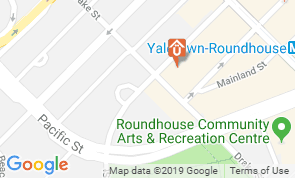Selling a house can be a daunting and complicated process. You want to make your home attractive to potential buyers, but you also don’t want to waste money or time on repairs and renovations that won’t make a difference. How do you decide what to fix and what to leave alone?
In this blogpost, we will share some tips on what not to fix when selling a house, based on the current market conditions, buyer expectations, and return on investment. Of course, every situation is unique, and you should always consult with a professional real estate agent before making any big decisions. But here are some general guidelines to help you avoid unnecessary fixes.
Don’t Go Overboard with the Exterior
The exterior of your home is the first thing that buyers will see when they drive by or visit your property. It can influence their decision to request a showing, or even make an offer. Therefore, it’s important to make sure that your home looks appealing and well-kept from the outside.
However, that doesn’t mean that you have to spend a lot of money on landscaping, painting, or replacing your siding or roof. According to the 2021 Cost vs. Value Report by Remodeling Magazine, most exterior projects have a low return on investment (ROI), meaning that you won’t get back much of the money you spend on them when you sell your home.
For example, the report estimates that adding a manufactured stone veneer to your home costs an average of $10,386, but only adds $9,571 to the resale value, resulting in a 92.1% ROI. Replacing your garage door costs an average of $3,907, but only adds $3,663 to the resale value, resulting in a 93.8% ROI. Replacing your siding costs an average of $17,008, but only adds $13,195 to the resale value, resulting in a 77.6% ROI.
Instead of investing in these costly and low-ROI projects, focus on the essentials: mow the lawn, trim the hedges, weed the flower beds, clean the windows, doors, and gutters, and repair or replace any damaged or missing shingles. You can also add some cheap and easy touches like fresh flowers, plants, or lanterns to make your home look more inviting and welcoming.
Don’t Renovate Your Kitchen or Bathroom
The kitchen and bathroom are often considered the most important rooms in a house. WeBuyHousesChicago emphasizes that they are where buyers look for functionality, comfort, and style. Therefore, many sellers think that they have to renovate their kitchen or bathroom to make them more modern and attractive.
However, renovating your kitchen or bathroom can be very expensive and time-consuming. According to the 2021 Cost vs. Value Report by Remodeling Magazine, a minor kitchen remodel costs an average of $26,214, but only adds $18,927 to the resale value, resulting in a 72.2% ROI. A major kitchen remodel costs an average of $75,571, but only adds $43,364 to the resale value, resulting in a 57.4% ROI. A midrange bathroom remodel costs an average of $24,424, but only adds $13,688 to the resale value, resulting in a 56% ROI.
Moreover, renovating your kitchen or bathroom may not match the taste or needs of potential buyers. They may prefer a different design, color scheme, or style than what you choose. They may also want to customize the space themselves after they move in. Therefore, unless your kitchen or bathroom is in very bad shape or outdated beyond repair (think harvest gold appliances or blue tiles), it’s better to leave them as they are.
Instead of renovating your kitchen or bathroom completely, focus on making them clean and functional. Fix any leaks or damages that may affect the plumbing or electrical systems. Replace any broken or worn-out fixtures or hardware. Paint the walls and cabinets a neutral color if they are too bright or dark. Deep clean the floors and countertops and remove any clutter or personal items. You can also add some inexpensive accessories like new towels or rugs to freshen up the space.
Don’t Personalize Your Home
Another mistake that sellers make is personalizing their home too much. This means adding features or decorations that reflect their personal style, taste, or hobbies, but that may not appeal to the majority of buyers. For example, painting your walls with murals, installing custom cabinets or shelves, or displaying collections of memorabilia or art may make your home look unique and interesting to you, but they may also make it look cluttered, outdated, or eccentric to others. Buyers may have a hard time imagining themselves living in your home if it is too personalized to your preferences.
The goal of fixing your home before selling it is to make it look as clean, spacious, and inviting as possible to attract as many buyers as possible. You want to showcase your home’s best features and potential, not your personality or lifestyle. Therefore, you should avoid any fixes that will make your home look too specific or niche to a certain type of buyer. Instead, you should aim for a more neutral and minimalist style that will appeal to a wider audience.
Some examples of fixes that you should avoid are:
-
Cosmetic flaws, such as painting and landscaping. Painting and landscaping are expensive and time-consuming, and they may not match the buyer’s taste or expectations. You may end up spending more money than you can recoup in the sale. Instead, focus on cleaning, decluttering, and staging your home to make it look appealing and spacious. Use neutral colors and simple decor to appeal to a wider audience.
-
Minor electrical issues, such as faulty light switches or outlets. Minor electrical issues are not deal-breakers for most buyers. They are easy and cheap to fix, and they don’t affect the safety or functionality of your home. Instead, disclose any minor electrical issues to the buyer and offer a credit or a discount if they request it. Alternatively, you can hire a licensed electrician to fix them before the inspection.
-
Driveway or walkway cracks. Driveway or walkway cracks are not a major concern for most buyers. They are usually caused by normal wear and tear, and they don’t affect the curb appeal or the value of your home. Instead, sweep and wash your driveway and walkway to remove any dirt or debris. Fill in any large cracks with caulk or concrete filler if they pose a tripping hazard.
-
Grandfathered-in building code issues. Grandfathered-in building code issues are those that were legal when your home was built but are not up to current standards. For example, your home may have asbestos insulation or lead paint. These issues are not required to be fixed unless you make major renovations or alterations to your home. Instead, disclose any grandfathered-in building code issues to the buyer and provide any documentation or records you have. If the buyer requests a remediation, negotiate a fair price or offer a credit or a discount.
-
Partial room upgrades, such as replacing the countertops or the cabinets in the kitchen. Partial room upgrades can make your home look mismatched and outdated. They can also create unrealistic expectations for the rest of the home. You may end up spending more money than you can recoup in the sale. Instead, keep your home updates consistent and in line with your neighborhood and comparable homes. Don’t install Italian marble when everyone else has linoleum. If your home is outdated, consider selling it as is or making minor cosmetic improvements.
Don’t Forget the Small Details
Finally, don’t forget to fix the small details that can make a big difference in how your home looks and feels. These include fixing any cosmetic issues, such as cracks in the walls, stains on the carpets, scratches on the floors, or chips on the paint. These issues may seem minor, but they can affect your home’s appearance and value. Buyers may notice these flaws and think that your home is poorly maintained or has bigger problems that are hidden. They may also use these flaws as leverage to negotiate a lower price or ask for repairs.
Another small detail that you should fix is the lighting. Lighting can affect the mood and ambiance of your home. It can also highlight your home’s best features or hide its flaws. Therefore, you should make sure that your home has enough natural and artificial light sources. Open the curtains and blinds to let in as much sunlight as possible. Replace any burned-out bulbs or broken fixtures. Add lamps or candles to create a cozy and warm atmosphere.
Conclusion
Fixing your home before selling it can be a smart move to increase your chances of selling it faster and for a higher price. However, not every fix is worth doing. You should avoid going overboard with the exterior, renovating your kitchen or bathroom, personalizing your home, or forgetting the small details. By following these tips, you can make your home look more appealing and attractive to potential buyers without spending too much money or time on unnecessary fixes. Good luck with your sale!










